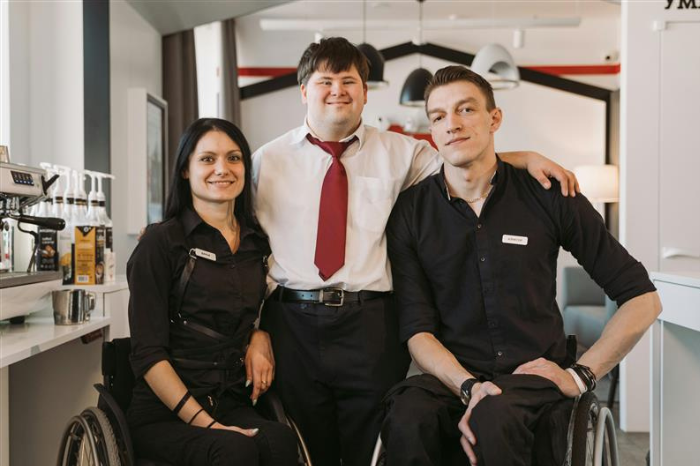When you send your customers information, it’s important to make sure everyone can access and understand it, no matter what their ability or situation.
Here are some tips to communicate with your customers in an accessible way, so they can all be included and stay connected to your business.
Accessible communication isn’t just for people with a disability, it actually helps to improve communications for everyone. Disability can impact how people understand and gather information, so changing your communication approach to clients creates inclusive messaging that meets everyone’s needs, no matter the audience you’re speaking to. Ultimately, it’s about speaking to your clients and not at them, so they are taken on a journey and not left behind.
There’s a legal aspect too – communication that isn’t accessible to everyone could go against Australia’s anti-discrimination laws.
Understand your client and their needs
When creating messaging, it’s important to keep your audience front of mind. If your audience can’t understand what you’re trying to say they might feel excluded.
There are many ways to communicate to your clients, so it’s worth asking yourself a few questions when creating content:
- Who are you speaking to?
- What is the purpose of your message?
- What is the message you want your clients to take away?
- Will everyone be able to access the information your providing?
- Does your communicated cater for a range of disabilities? E.g. hearing impairment, visual impairment
Terminology can often impact how accessible communications is, especially the use of jargon which may not be understood by all audiences. Define a clear message upfront and use simple language your audience will understand.
Web accessibility
It’s likely much of your communication with clients is online, either through website or email. Web accessibility is important as it impacts a person’s ability to view, understand and interact with websites. Online communications need to accommodate people with all disabilities including:
- Visual impairment
- Hearing impairment
- Speech impairment
- Physical mobility e.g. difficulty operating a keyboard or mouse
- Neurological e.g. seizures due to flashing effects
- Cognitive e.g. learning difficulties
So how do we cater for people with different and varying degrees of disability? We’ve outlined some practical steps you can start with. If you’re interested in having your website reviewed, Vision Australia provides auditing services to identify accessibility issues and provide recommendations on how to solve them.
Practical tips
- Is the text size and contrast colour readable on a screen? The text needs to be large enough for all readers, ideally size 12, and there needs to be contrast between the text colour and the background colour.
- Can a screen reader easily access the information? People with vision impairments often use screen readers to read digital content, including on websites and in emails. When creating and laying out headings it’s important to structure the content using ‘true’ headings. This means using a heading hierarchy (heading 1, heading 2, etc) so a screen reader can clearly tell the difference between headings, subheadings, and content.
- Do your images have image descriptions? Providing alternative text or ‘alt text’ with your image means a screen reader can convey the meaning of an image and the reader doesn’t feel like they have missed out on any information.
- Do your videos have subtitles or open captions? Subtitles are useful on videos for those that don’t speak the language spoken in the video, while open captions are an embedded transcript of the video that appears down the bottom of the screen. Both are important for accessibility reasons but also benefit people who can’t have loud volume e.g. commuting on public transport.
- Are you using meaningful links within your content? Using non-descriptive links such as “click here” or “read more” doesn’t tell the reader where they will end up once they click on the link and it can be frustrating for people using screen readers. Instead, hyper-link the words that describe where the link leads to keep a consistent communication flow.
An inclusive approach to your business communications will build an ongoing connection with your clients and reassure them they are with the right provider to meet their needs. If you’re interested to find out more about how to meet the needs of your clients, we have a detailed article on this very topic.
These are just a few tips to get you started. We encourage you to continue learning about accessibility, so you can find the best ways to communicate in an inclusive way in your business, and keep on top of the latest accessible technology and best practice standards.



